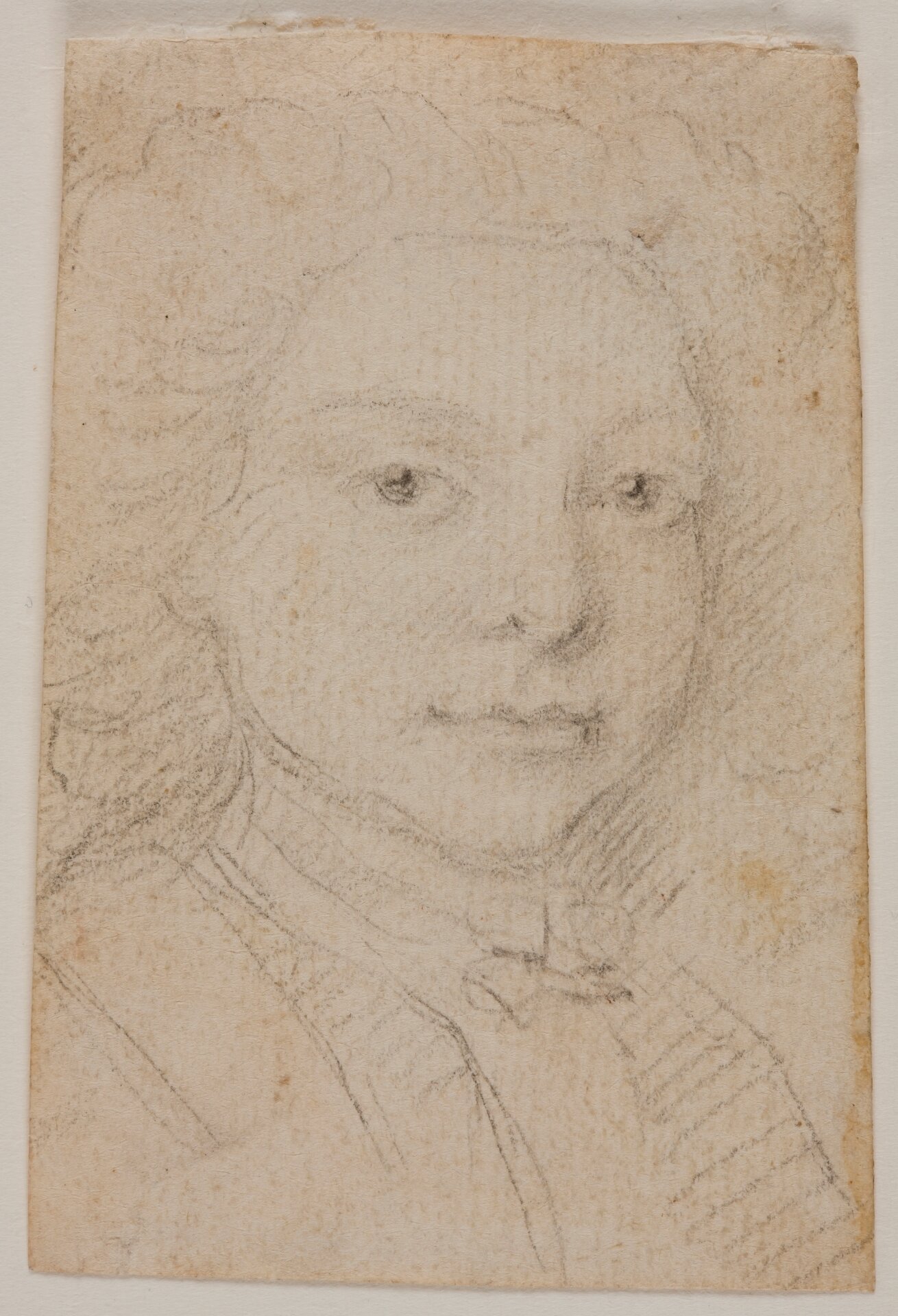
Miguel Jacinto Meléndez, The Infante Felipe, early 18th century, black pencil on laid paper, Madrid, Museo del Prado.

Toribio Álvarez, Academic Drawing of a Nude Male, 1714, black pencil, red chalk, heightened with white, on greyish paper, Madrid, Museo del Prado.

Louis-Michel Van Loo, The Family of Philip V, pencil, black and brown ink, heightened with white, on sepia tinted paper, 1743, Madrid, Real Academia de Bellas Artes de San Fernando.

González Ruiz, Life Study, 1744, red chalk on laid paper, Madrid, Museo del Prado.
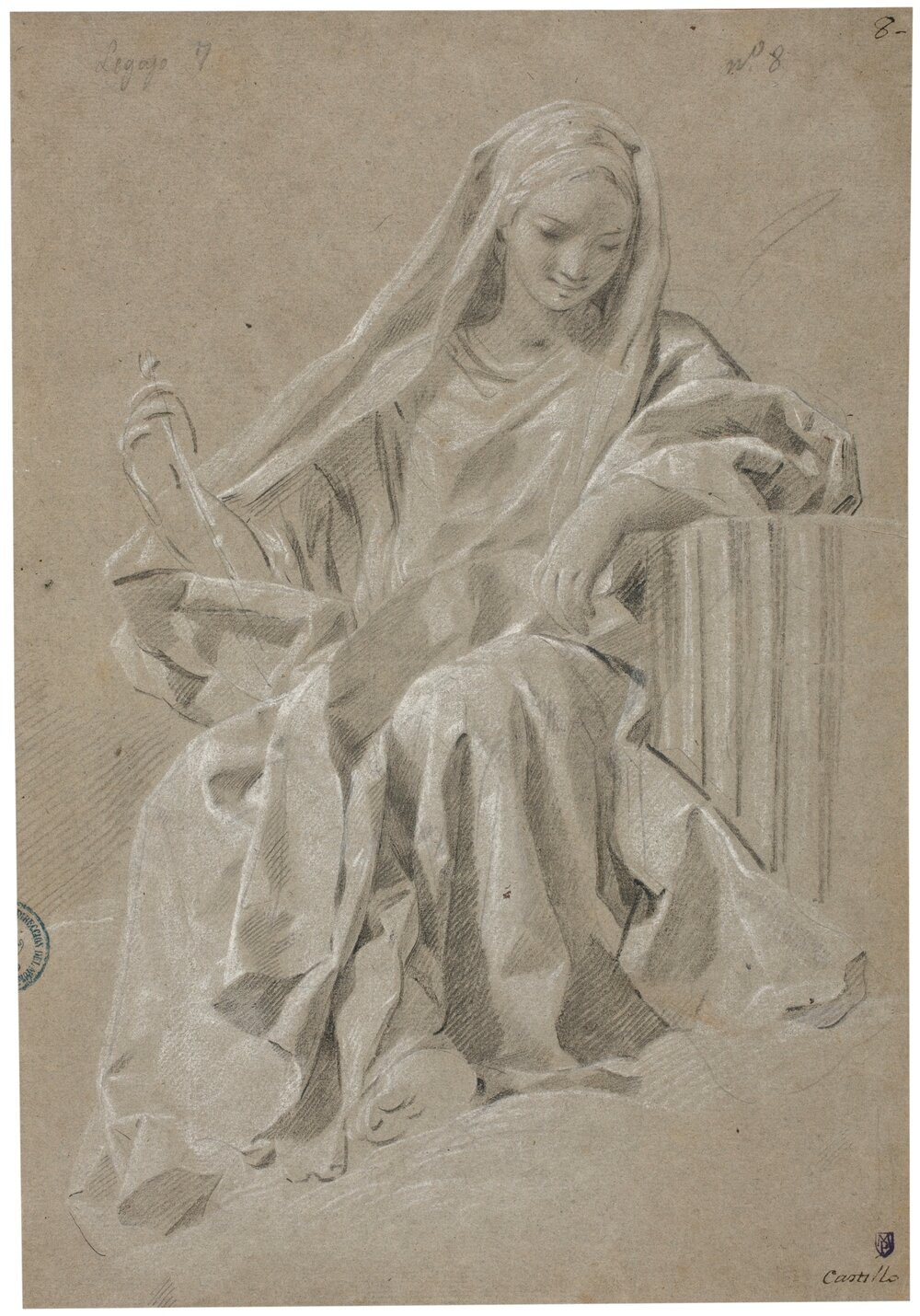
José del Castillo, Allegory to Chastity, 1771, black pencil heightened with white on laid paper, Madrid, Museo del Prado.
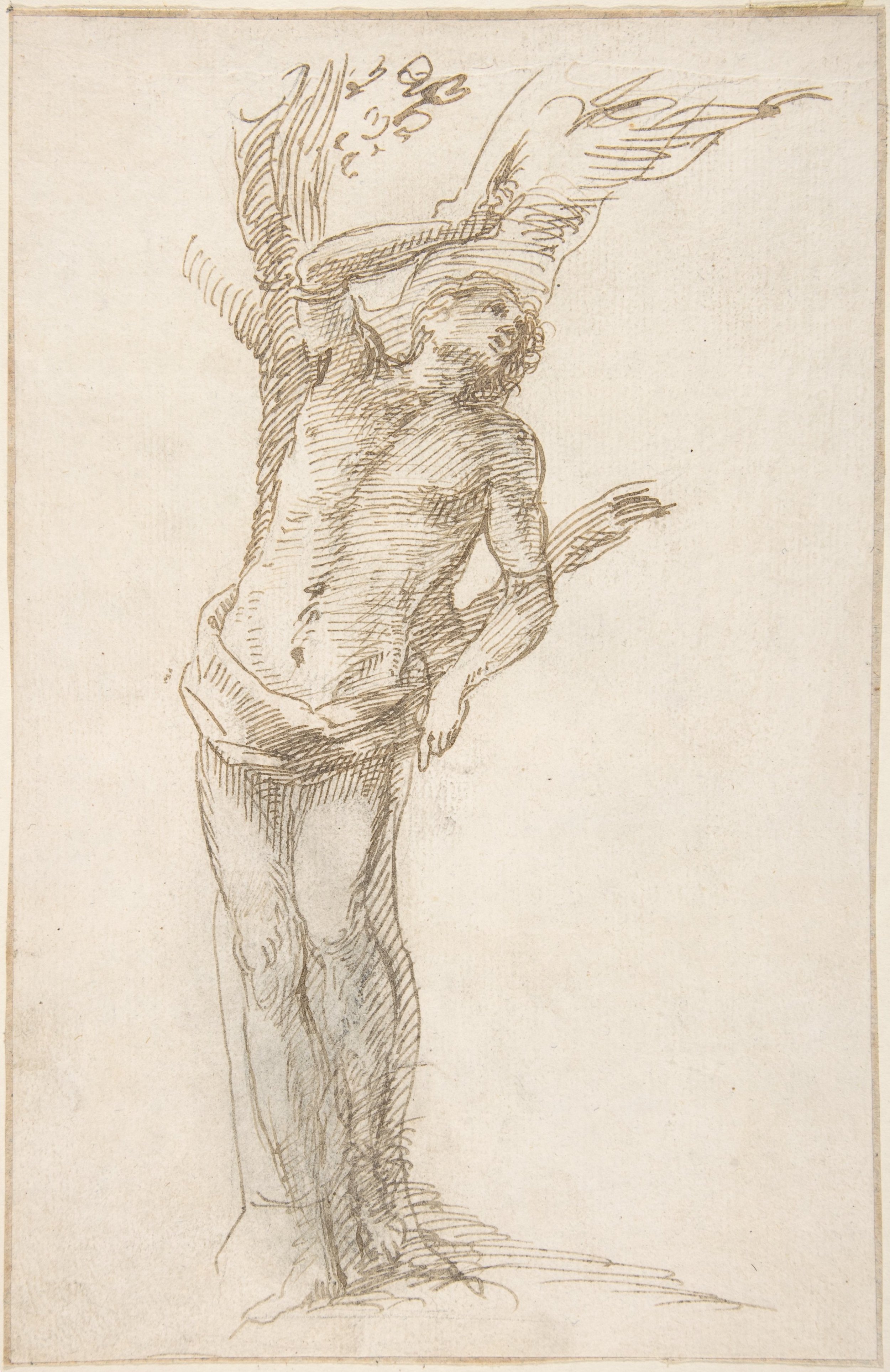
Attributed to Pedro Duque Cornejo, Saint Sebastian Tied to a Tree, early 18th century, pen and brown ink over black chalk under drawing on white paper, New York, The Metropolitan Museum of Art.
Duque Cornejo was mainly known as a sculptor and the grandson of the highly-regarded Sevillian sculptor Pedro Roldán. If the attribution is correct, this sketch is likely to have been made for a polychrome sculpture for an altarpiece in a local church.
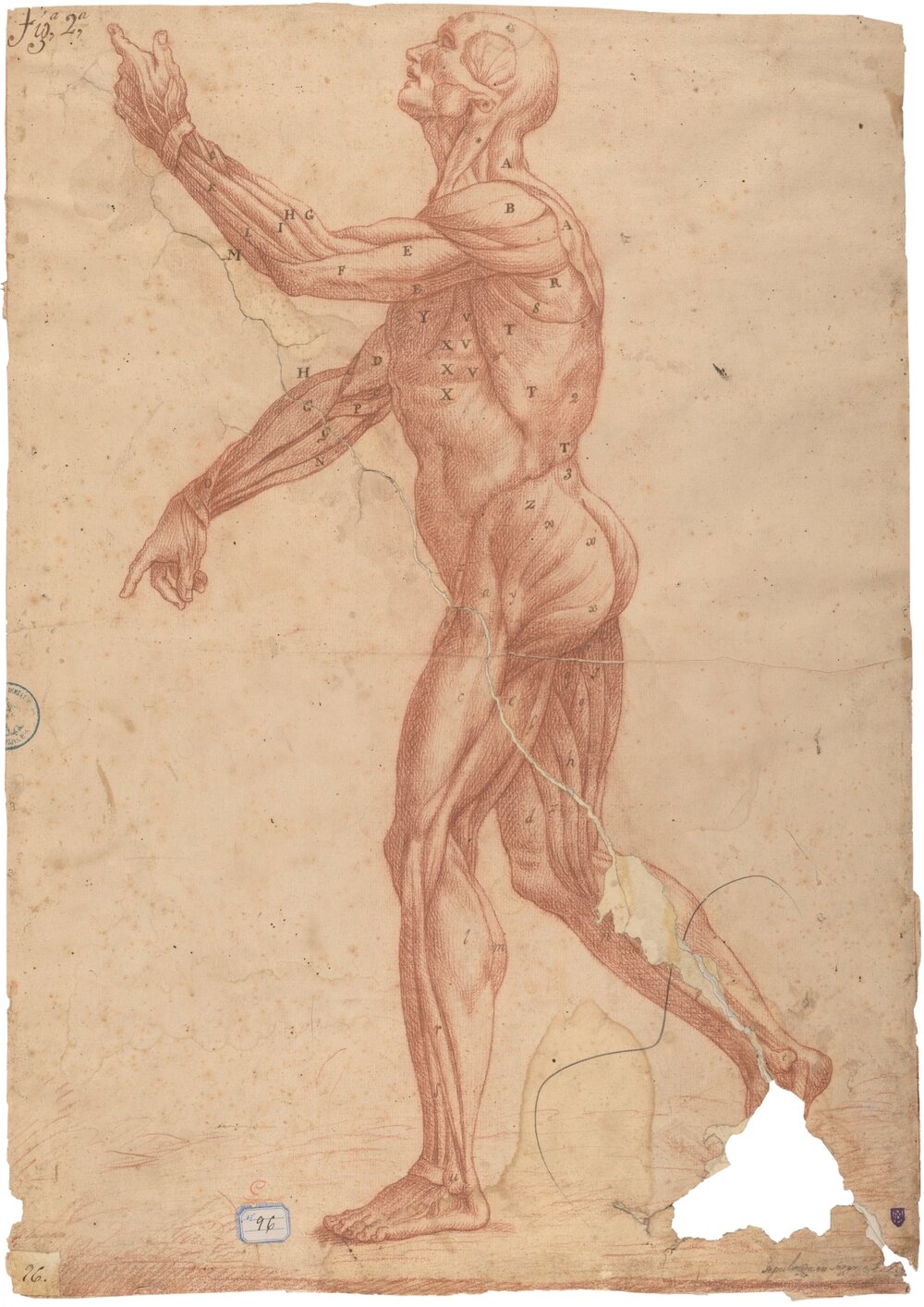
Pedro González de Sepúlveda, Anatomy study 1773, red chalk, ink on paper, Madrid, Museo del Prado.

Anton Rafael Mengs, Self Control, 1774, charcoal, black pencil, heightened with white on laid paper, Madrid, Museo del Prado.

Francisco Bayeu and Subías, Study for the Head of Saint Elizabeth, 1791, black pencil, heightened with white, on greenish paper, Madrid, Museo del Prado.

José Bonanat, Sancho Panza Drinking with the Pilgrims and Ricote, ca. 1797 – 1798, brown gouache, feather on greenish, yellowed paper, Madrid, Museo del Prado.

Mariano Salvador Maella, Moorish Figure, 1797, black pencil, heightened with white, on greenish paper, Madrid, Museo del Prado.
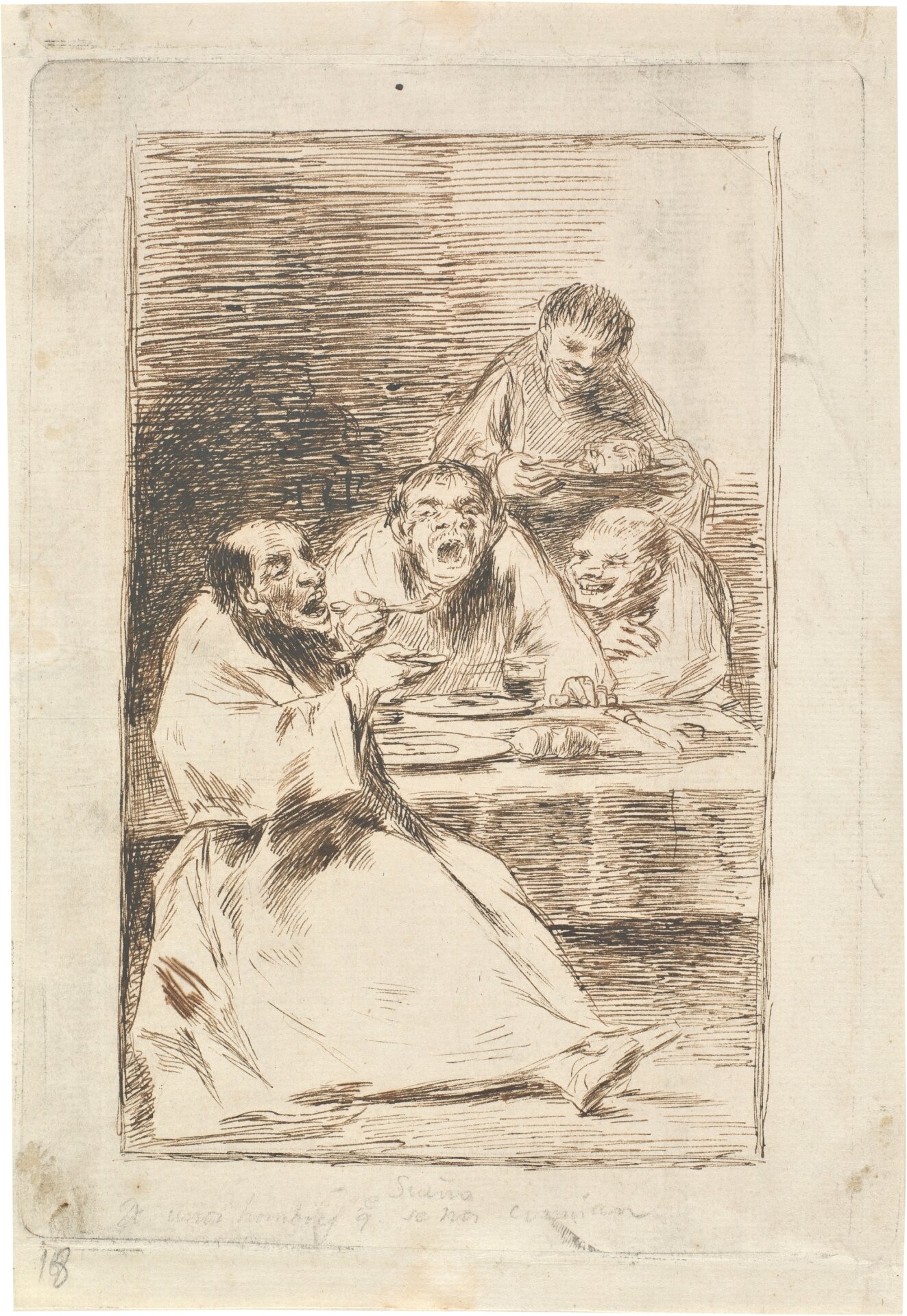
Francisco de Goya y Lucientes, Dream of Some Men Who Were Eating Us, 1796 -97, pencil, iron gall ink on laid paper, Madrid, Museo del Prado.
Preparatory drawing for the etching Capricho 13. They are Hot . This work is one of twenty-six pen drawings that make up the Dreams series on which the Caprichos were based. Both the preliminary and preparatory drawings differ in some ways from the final print.

Francisco de Goya y Lucientes, Nightmare, An Old Woman Carrying Figures on her Back, ca. 1819–1823, brush, black ink, and wash on paper, New York, Metropolitan Museum of Art.
This drawing is from folio 20 from the Witches and Old Women Album 'D'.

Francisco de Goya y Lucientes, Universal Language, The Author Dreaming, 1797, black chalk, pencil, Iron gall ink on laid paper, Madrid, Museo del Prado.
International Language is the preparatory drawing for the well-known Capricho 43, The Sleep of Reason Produces Monsters, and bears the marks of having been transferred to the copper plate.

Francisco de Goya y Luicientes, Acrobats; Images of Spain Album, 67, ca. 1812-20, brush and brown wash on laid paper, New York, Metropolitan Museum of Art.














